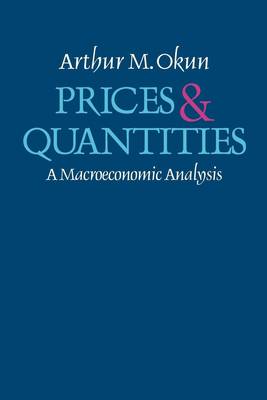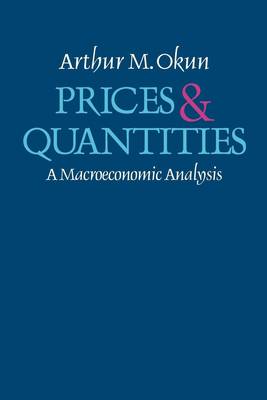
- Afhalen na 1 uur in een winkel met voorraad
- Gratis thuislevering in België vanaf € 30
- Ruim aanbod met 7 miljoen producten
- Afhalen na 1 uur in een winkel met voorraad
- Gratis thuislevering in België vanaf € 30
- Ruim aanbod met 7 miljoen producten
Zoeken
Omschrijving
During the past decade Arthur M. Okun, like many economists, focused attention on finding ways to fight inflation without sacrificing goals of high employment and prosperity. In recent years the economy has been plagued by stagflation--the simultaneous persistence of high inflation and high unemployment. Traditional methods of aggregate demand management that have been reasonably successful in curing either one or the other of these problems have not been effective, and the nation has not been able to contain inflation even in periods of economic slack. It now seems clear that the economists' traditional model that presumes short-run flexibility in wages and prices no longer holds for most of the industrial world, and hence the response of inflation to shifts in macroeconomic policy is weak. In this volume Okun seeks to explain that loss of responsiveness by analyzing how modern labor and product markets work and how they are structured. A central feature of Okun's analysis is implicit contract theory, which recognizes that efficiency-maximizing decisions by business firms reflect long-term considerations as well as short-term changes in markets. His interpretation of microeconomic behavior and macroeconomic performance provides a basis for the design of policies to deal with stagflation.
Specificaties
Betrokkenen
- Auteur(s):
- Uitgeverij:
Inhoud
- Aantal bladzijden:
- 382
- Taal:
- Engels
Eigenschappen
- Productcode (EAN):
- 9780815764793
- Verschijningsdatum:
- 1/03/1981
- Uitvoering:
- Paperback
- Formaat:
- Trade paperback (VS)
- Afmetingen:
- 152 mm x 229 mm
- Gewicht:
- 557 g

Alleen bij Standaard Boekhandel
+ 94 punten op je klantenkaart van Standaard Boekhandel
Beoordelingen
We publiceren alleen reviews die voldoen aan de voorwaarden voor reviews. Bekijk onze voorwaarden voor reviews.








